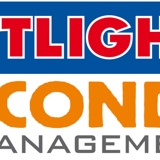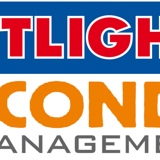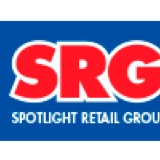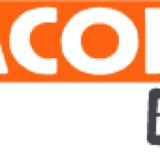Information
-
Store
-
Store Number followed by Store Name (i.e 011 Launceston Spotlight)
-
Audit No.
-
Conducted on
-
Risk Manager
Store Details / Previous Audit / Executive Summary
Store Details
-
Store Name
-
Store Number followed by Store Name (i.e 011 Launceston Spotlight)
-
Address
-
Store Manager
-
Regional Manager
-
Photo/s of store
Previous Audit
-
Has there been a previous Spotlight Retail Group Insurance Audit conducted at this store?
-
Date of last Audit
-
Score of previous Audit
-
Risk Manager
-
Major issues identified in previous Audit
Executive Summary from this Audit
-
Executive Summary
-
Additional comments or photos for issues or items not included within Audit
-
Additional photos for items or issues not contained within the Audit
-
Additional comments for items or issues not contained within the Audit
Weighting: Each question has been weighted in relation to it's importance, severity or risk to the business. The Weights are listed next to each question within brackets. The higher the risk, the more points the question is worth. Questions are weighted as follows: (1) - Low risk, importance or severity (2) - Medium risk, importance or severity (3) - High risk, importance or severity
Scoring Results: Each question is scored against the level of completion or competence demonstrated versus the SOP / Process / Requirement. Some questions allow for a partial completion to not to over penalise the store for doing the process correctly most of the time. Scoring: - Pass - 100% of total score for that question - Partial - 50% of total score for that question - Fail - 0% of total score for that question - N/A - removal of score, will not effect result
COPE Form
-
Is a COPE Form Required to be completed for this store?
COPE Form
-
Store Address details
-
Photo/s of the store
-
Situation of Risk:
Building Construction
-
Walls
- Brick / Concrete
- Iron
- AC Sheeting
- Other
- Mixed
- Frame
-
Other - Please specify
-
Floors
-
Other - Please specify
-
Number of floors
-
Roof
-
Other - Please specify
-
Building Condition
-
Year of construction
-
Electrical / Wiring installation condition
-
Year of installation
-
Do you wish to attach photos?
-
Photos of Building Construction
Fire Protection
-
Fire Sprinklers
-
Number of zones
-
Year of installation
-
Fire Detection
-
Type
-
Hose Reels
-
Number
-
Last Serviced (tag date)
-
Break Glass Alarms
- Red Break Glass (Fire Brigade Notification)
- White Break Glass (Local Only)
- No
-
Extinguishers
-
Types
- Dry Chemical
- Water
- CO2
- Other
-
Number
-
Last Serviced (tag date)
-
Type
-
Number
-
Last Serviced (tag date)
-
Fire Blankets
-
Number
-
Last Serviced (tag date)
Building Security
-
Physical Security Details:
-
Alarm System Model
-
Installer
-
Movement Detectors
-
Type of Detectors
- PIR
- 360 PIR
- Reed Switches
- Glass Break Detectors (non fire door)
- Seismic Alarms
- Other
-
Type
-
Local Devices
- Internal Screamers
- External Sirens
- Strobe Lights
- Other
-
Type
-
Securitel
-
Phone number
-
GSM Back Up
-
Phone number
-
Monitoring Company
-
Monitored by:
-
Notify Police
-
Send Patrolman
-
Notify Store
-
CCTV System
-
Type of System
-
Type of system
-
Model
-
Firmware
-
Number of Cameras
-
External Cameras
-
Number of external cameras
-
Customer View monitors
-
Location of customer view monitors
-
System fully operational
-
Issues with system
Business Interruption
-
Tick box to complete this section
-
Estimated Sales $
-
Estimated Expenses $
-
Total Wages $
Claims History
-
Tick box to complete this section
-
Date of Loss
-
Details of Claim
-
Paid
-
Outstanding
Comments and Photographs
-
Any other comments and Photographs
-
Add media
Insurance Audit
The following audit record will only the list faulted questions and areas of concern. All questions marked as pass or acceptable are not listed. For a full version of the complete audit please speak to the Risk Manager who completed the Audit.
Building Details
-
Enter building structure details
-
Complete details of the building structure including type of materials, location (e.g. Shopping Centre , Home maker Centre etc)
-
Enter surrounding exposures/environment if applicable
-
Complete details of any environmental issues or exposures that may surround the buiding
Means of Escape
-
Evacuation routes clear of obstructions (3)
-
Nothing should be obstructing travel on the evacuation route. This means WAVES, Forklifts, Walkie Stackers, Pallets, Fixtures, Stock, Rubbish etc. Evacuation routes are to be a minimum of one metre wide.
-
Evacuation routes lead to open space (2)
-
The final exit must lead to an open space, where people are safe from the effects of fire or other emergency within the building. The final exit may not be the direct exit from the store (i.e. through a centre)
-
Final exits clear of obstructions for two metres (2)
-
There should be a minimum of two metres of clear and open space from the final exit of the building
-
Final exits of any adjoining properties are clear of obstructions (1)
-
We must ensure that all final exits of adjoining occupants / buildings are clear and unblocked leaving an open space by a minimum of two metres.
-
Additional comments?
-
Overall comments regarding Means of Escape within this store
-
Follow up?
-
Follow up required?
-
Who is responsible:
-
Action required by:
Exit Doors and Penetrations
-
Exit Door hardware is the correct type (1)
-
Exit doors must have the correct hardware in that it can be opened by a single downward or pushing action on a single device. Lever types or panic bars are the only acceptable devices. Door knobs, snib locks, dead bolts are not acceptable for exits.
-
Exit door locking mechanisms are the correct type (1)
-
Barrel bolts etc are not illegal provided they can be locked in the open position when the building is occupied. Electronic or mag locks must unlock on activation of fire evac system or have a manual override like a break glass
-
Auto doors open upon alarm or slide manually with minimal force (1)
-
Automatic doors must open on activation of the fire evac system, otherwise providing that doors can be opened manually with minimal force
-
Doors along evacuation routes are unlocked/unobstructed (2)
-
All doors on an evacuation route must not be obstructed or locked while there are people within the store
-
Fire/Smoke Doors are unobstructed and undamaged (includes closers working and no chocks) (1)
-
All fire / smoke doors must not be obstructed or damaged. Doors are not to be chocked open, and should automatically close and latch on closing. Doors held open automatically by a device must ensure that the door releases on activation of fire evac system.
-
Current maintenance records for all fire doors (2)
-
Check records for maintenance completed. You may need to access the red cabinet with the 003 key at front of store.
-
Fire/Smoke walls are free from unprotected penetration (1)
-
All fire and smoke walls should be free from penetrations. If a penetration exists it must have been sealed using fire retardent foam etc.
-
Additional comments?
-
Overall comments regarding Exit Doors and Penetrations within this store
-
Follow up?
-
Follow up required?
-
Who is responsible:
-
Action required by:
Evacuation Signs/Diagrams
-
The building has evacuation diagrams (2)
-
Type of Evacuation Diagram
-
Description of plans (e.g. Handmade)
-
Evacuation Diagrams are orientated correctly to the position within the building (2)
-
Evacuation Diagrams should be orientated correctly in that when you look at them it is relative to the direction you are facing. You may need to instruct store to relocate diagram in order to correctly orientate the diagram. If diagrams are still incorrect, you need to take photo of diagram, notate any changes and send through to Nick Smith for updating.
-
Additional comments?
-
Overall comments regarding Evacuation Diagrams within this store
-
Follow up?
-
Follow up required?
-
Who is responsible:
-
Action required by:
Exit Signs/Emergency Lighting
-
Exit Signs/Emergency Lighting are undamaged (1)
-
Check all of the Emergency Lights and signage to ensure they are all operating and are not damaged. Fault occurs if lights not operating and no maintenance job has been logged. Partial fault if job has been logged within a reasonable period of time (non complaint if logged 3 months ago with no follow up from the store)
-
Exit Signs are unobstructed (1)
-
All exits signs are to be visible and not blocked by stock, fixtures or other signage.
-
Exit Signs are in the correct locations (1)
-
Check to see that the exit signs are in the correct locations. In all areas of the store, you should be able to see at let one exit sign leading you to a means of escape. Also check that they are pointing you to an exit, and not a dead end.
-
Current maintenance records for Exit Signs/Emergency Lighting (1)
-
Check the maintenance records in the red cabinet with 003 key at front of the store. If there is no cabinet, ascertain from store when the last maintenance visit occurred. Mark n/a if you cannot ascertain last visit. Fault if last visit was outside of required schedule
Fire Extinguishers
-
All fire extinguishers correctly maintained and are usable (2)
-
Check tags for last Inspection date. Should be checked every 6 months. Check gauge on extinguisher to ensure that it has been charged correctly. Take extinguisher out of service should it be over charged or under charged.
-
Are fire blankets correctly maintained and are usable (2)
-
Review metal tags on fire blankets for latest maintenance check. Fire blanket should still be in cover and in usable condition.
-
Fire Extinguishers are identified correctly (1)
-
Correct signage should be located at height above the extinguisher. Fault occurs if signage is blocked or is missing.
-
Fire Extinguishers are available in critical areas. (1)
-
Fire extinguishers should be located in areas such as: near PDB's, Servers, store entry/exit points.
-
Fire Extinguishers are clear from obstructions and mounted correctly (2)
-
There must be clear access to extinguishers. Extinguishers are to be mounted securely to wall.
Other Fire Equipment
-
Tick items of Fire Equipment that the store has. When ticked, questions will expend. No tick indicates that stores does not have the items listed.
-
Fire Hose Reels
Fire Hose Reels
-
All fire hose reels are correctly maintained (2)
-
Fire hose reels should be neat and tidy, fully contained within their cabinet (if available) fully connected and appear to be in working order.
-
Current maintenance records for all fire hose reels (2)
-
Check metal tags to ensure that maintenance has occurred in the last 6 months.
-
Fire hose use identified correctly (1)
-
A sign should be displayed at height above the fire hose reel indicating the presence of the fire hose reel. The signage should not be blocked by stock, rubbish, fixturing or signage.
-
Fire hose reels clear from obstructions (2)
-
Fire Hose Reels must not be obstructed by stock, fixtures, rubbish or signage. There should be clear access of approx 1 metre.
-
Fire hose reels are in working order (2)
-
Fire Hose Reels should appear t be in full working order
-
Fire Detection and Alarm Systems
Fire Detection and Alarm Systems
-
Fire detection and alarm system operating with no isolations or faults indicated (2)
-
Review Fire detection and alarm system panel for faults or issues that may be indicating upon it. Fault occurs if there are faults or issues with the panel relating to our store or area of resonsibility.
-
Current maintenance records for fire detection and alarm system (2)
-
Review where possible the maintenance records of the Fire detection and alarm system panel. N/A if you cannot locate records.
-
If fire detection and alarm system is not connected to the fire service, are manual call points signed to "Call 000" or international equivalent (2)
-
Fault occurs if there is no signage and the alarm system is a local alarm (i.e. not directly linked to the Fire Brigade)
-
Evacuation Systems
Evacuation Systems
-
Evacuation System is in "auto" with no zones isolated or in fault (2)
-
Check that Evacuation System is in Auto mode, not bypassed, isolated or in a manual setting. This only applies to our store, or area of responsibility.
-
Current maintenance records for Evacuation System (2)
-
Review where possible the maintenance records of the Evacuation system. N/A if you cannot locate records.
-
Sprinkler System
Sprinkler System
-
Is sprinkler booster installation undamaged (2)
-
View Sprinkler Booster to look for obvious signs or damage or tampering.
-
Are sprinkler heads serviceable with a minimum 1 metre clearance (2)
-
Review sprinkler heads around the store and ensure that there is a 1 metre clearance from the heads.
-
Current maintenance records for sprinkler system (2)
-
Review where possible the maintenance records of the Sprinkler System. N/A if you cannot locate records.
-
Hydrant System
Hydrant System
-
Is fire hydrant booster installation undamaged (2)
-
View Fire Hydrant Booster to look for obvious signs or damage or tampering.
-
Are all fire hydrants undamaged (2)
-
View all Fire Hydrants to look for obvious signs or damage or tampering.
-
Current maintenance records for hydrants (2)
-
Review where possible the maintenance records of the Fire Hydrant Booster. N/A if you cannot locate records.
-
Smoke and Heat Ventilation System
Smoke and Heat Ventilation System
-
Current maintenance records for smoke and heat ventilation system (2)
-
Review where possible the maintenance records of the Smoke and Heat Ventilation System. N/A if you cannot locate records.
-
Emergency Lift - Fire Service Control
Emergency Lift - Fire Service Control
-
Current maintenance records for Emergency Lifts (2)
-
Review where possible the maintenance records of the Emergency Lifts. N/A if you cannot locate records.
Fire and Life Safety Housekeeping
-
Housekeeping acceptable directly relating to fire and trip hazards (2)
-
Fault occurs if there is a build up of fire or trip hazards around the store that is related to housekeeping.
-
Business Identification evident at front and rear for premise for emergency services (1)
-
There should be appropriate signage at the front and rear of the store to indicate the location of our business.
Evacuation Plans
-
Fire and Evacuation Plan Manual is in place (2)
-
Type of Fire and Evacuation Plan Manual
-
Other, please specify
-
Fire Evacuation Plan Manual should be available in in place within the store. Fault occurs is store cannot produce Fire & Evacuation Plan Manual.
-
Does the Managing entity and secondary occupiers' Fire and Evacuation Plan for multi-occupancy buildings complement our Fire and Evacuation Plan (1)
-
The Store's fire plan should mirror / complement the plan from the other occupiers or shopping centre.
-
Fire and Evacuation plans kept in specified form (1)
-
The plan is to be either: Trimevac, Fire and Safety Australia, or Risk Management approved plans. Fault occurs if no plan in place, or isn't the approved type of plan.
-
Procedure in place to evacuate persons with special needs (1)
-
PEEP plan to be in place.
-
All Fire and Evacuation plans available upon request (1)
-
Store is able to produce the plan for any authorised person who should request it (i.e. Fire Services)
-
Fire and Evacuation plans current and reviewed annually or within their validity date (1)
-
Check for last review. Should either be valid (if plan has validity date) or within 12 months of an issue date. If fault occurs comment on date of issue or whenever last review took place.
Fire and Evacuation Instruction
-
General Evacuation Instructions given (1)
-
General evacuation instructions are to be issued to the store in the appropriate timeframes.
-
Current records for general evacuation instructions kept (1)
-
There should be records maintained of when training occurred and who attended. Fault occurs if records cannot be sighted, or records are out of date.
-
First Response evacuation instructions given (1)
-
First Response instructions are to be issued to the store in the appropriate timeframes.
-
Current records for First Response evacuation instructions kept (1)
-
There should be records maintained of when training occurred and who attended. Fault occurs if records cannot be sighted, or records are out of date.
-
Evacuation coordination instructions given (1)
-
Evacuation co-ordination instructions are to be issued to the store in the appropriate timeframes.
-
Current records for evacuation coordination instructions kept (1)
-
There should be records maintained of when training occurred and who attended. Fault occurs if records cannot be sighted, or records are out of date.
-
Evacuation practice conducted annually (2)
-
An evacuation trial is to be conducted within a 12 month timeframe.
-
Current evacuation practice records kept (2)
-
There is to be documented record an an evacuation taking place. It is to list date occurred, and who was involved. Fault occurs if records cannot be located, or is out of date.
Company Emergency Procedures
-
Procedure in place to provide adequate instruction to prescribed persons (1)
-
Prescribed persons means visitors and contractors. Induction information listing evacuation information and safe assembly points etc is to be accessible to visitors and contractors at the time of signing in.
-
Fire Wardens nominated for this premises are listed (1)
-
Fire Wardens should be listed on Emergency Procedures documentation on Tea Room / Safety noticeboard. Fault occurs is no names are listed or is out of date.
-
Emergency telephone numbers displayed (1)
-
Emergency Phone Numbers are to be listed on the Emergency documentation on Tea Room / Safety noticeboard. Fault occurs if not compete or outdated information.
Electrical and Power Distribution Boards (PDB's)
-
Thermal Imaging performed in the last 12 months (1)
-
Details of the last Thermal Imaging can be found on shared Risk Drive under Property > Thermal Imaging. Fault occurs if you cannot establish when the last Thermal Imaging took place. Send information through to Tim for follow up if required.
-
All Power Distribution Boards clear of obstructions to 1m (2)
-
Power Distribution Boards are to have clear access to 1m surrounding the PDB. Fault occurs if there is no clear access or obstructions are within 1m.
-
All Power Distribution Boards clear of combustibles to 2m (2)
-
There is to be no combustable items within 2m of the Power Distribution Board. This means stock, rubbish, boxes etc. Metal fixturing / Shelving excluded as long as it is metal and does not restrict access.
-
All electrical cords tested and tagged to current date (Aust Only) (1)
-
Check a number of tags to ensure that Test and Tag has been completed in the last twelve months. If an item is new and been installed since last test (and under 12 months) it is acceptable.
-
All electrical outlets in good repair and suitable to company requirements (1)
-
All electrical outlets are to be safe and i working order. Outlets that are damaged are not to be used, and maintenance job raised. Fault occurs for outlets not operational or damaged and no job raised or followed up.
Sign Off
Sign off
-
This audit has been discussed with a member of the Management Team. Areas of improvement have been discussed and actions on how to recitify.
-
Management Team Member
-
Will be followed up via
-
Will be followed up by
-
Risk Manager
-
Risk Manager comments
-
Management Team Member / Store Representative
-
Management Team Member / Store Representative comments
-
Once complete, a copy of the Insurance Audit is to be sent to the following people:
TO:
- Store Manager email
- Regional Manager
CC:
- Michael Buchanan
- Janeece Race
- Gillian Brooks (Spotlight Audits)
- Roy Sammartino (Spotlight Audits)
- Luke Ascott (Anaconda Audits)
- Peter Venter (Anaconda Audits)
If you have maintenance issues please forward to Risk Management Helpdesk
If you have safety issues please forward to Sandra Shaw
A copy will remain on your iPad, but you should email and save to your laptop.









